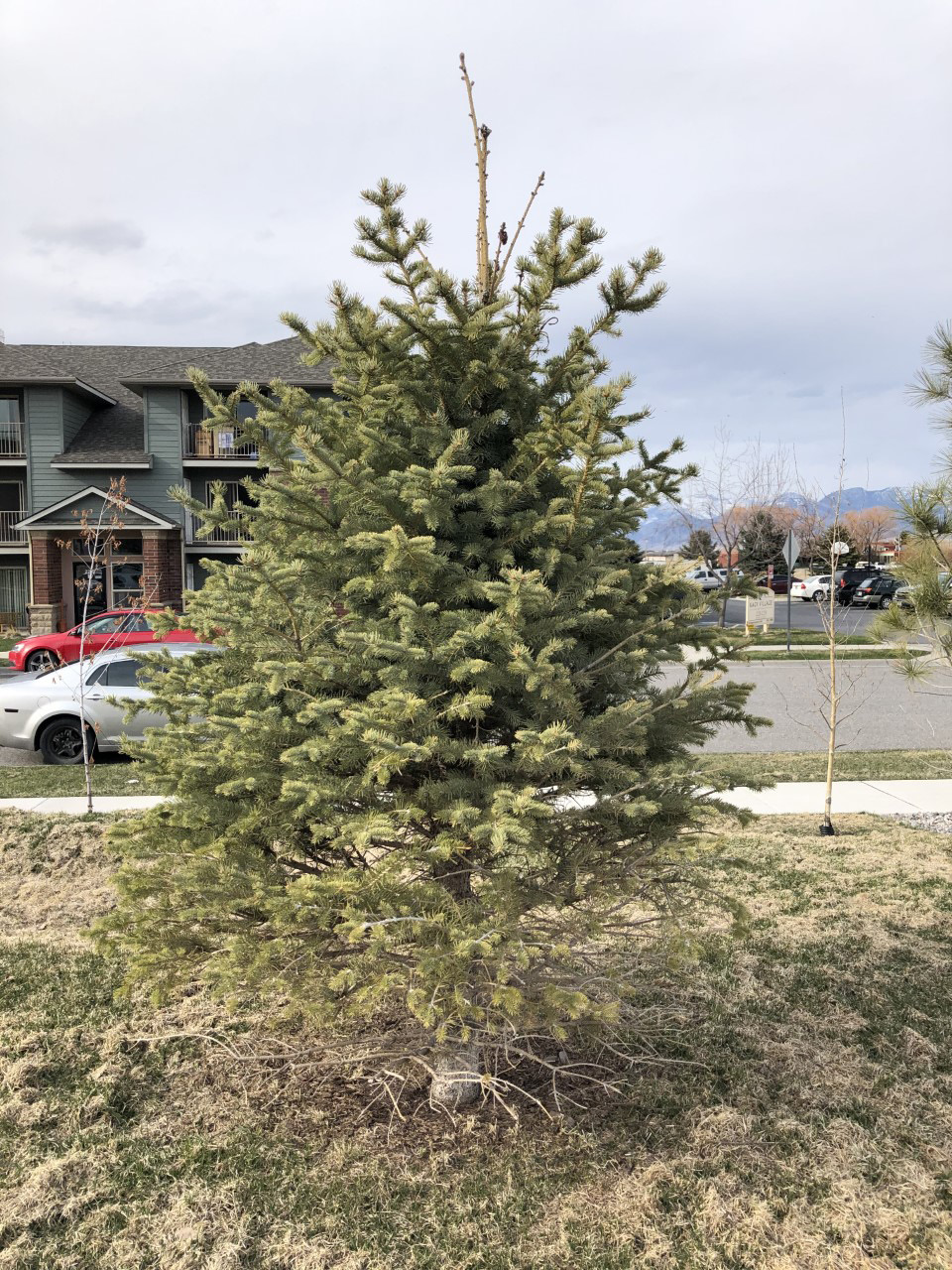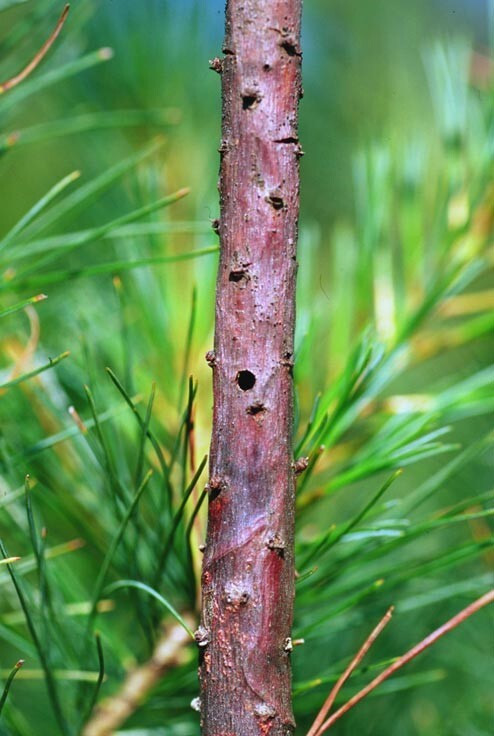White Pine Weevil (Pissodes strobi)

Figure 1. White pine weevil damage on blue spruce. Photo by Laurie Kerzicnik. Larger image (560KB).

Figure 2. White pine weevil exit holes on terminal of the tree. Photo by S. Katovich, Bugwood.org. Larger image (112KB).
Host
Spruce and white pine trees
Symptoms and Damage
Feeding by the developing insects causes the top terminal to suddenly wilt and die in early summer. This is often referred to as a “shepherd’s crook”. Once the top leader is killed, some side branches will change their growth habit and will grow upward to replace the dead leader.
Life Cycle
The weevil adults become active in early spring. They feed on the main branches near the leader and insert eggs into feeding cavities. Eggs hatch in about two weeks, and the larvae (immatures) will tunnel under the bark. The larvae pupate, and adults emerge in late July-August. The adults overwinter in leaf litter and debris around spruce trees.
Management
Non-Chemical Options
Only the top leader and upper branches of the tree are affected by the insect. The infested terminal can be clipped, and a new leader can be trained. This should be done when the larvae are still inside the branch (before the end of July). Terminals should be cut only as far down as necessary to remove the weevil larvae. Destroy the pruned terminals. Rake up the needles and debris under the tree in the fall.
Chemical Control
Chemical controls are only recommended if necessary, and the timing of application is critical. A common management strategy is to spray the terminal of the tree in the spring when adults are climbing to the top to lay eggs (April through May, depending on weather). Some of the active ingredients include permethrin (Astro), bifenthrin (OnyxPro, Reveal, Batallion 2, Tigris Bifen 2), or cyfluthrin (Tempo). Sprays targeted at the terminal of the tree will not be as effective once the larvae have burrowed underneath the bark.
Systemic insecticides with the active ingredients imidacloprid (Xytect, Imidastar, Acecap, Zylam), emamectin benzoate (Tree-Age), dinotefuran (Safari), or abamectin (Aracinate) can be applied as a soil drench or micro-injection in the early spring followed by several days of watering to allow for sufficient root uptake.
Further Information
To learn more about the topics discussed on this page, contact the Schutter Diagnostic Lab. If you suspect an infestation on your property, contact your local extension agent, the Schutter Diagnostic Lab at Montana State University, or the Montana Department of Agriculture.
This fact sheet is also available as a printable PDF (744KB).
Disclaimer: These recommendations are provided only as a guide. It is always the pesticide applicator’s responsibility, by law, to read and follow all current label directions for the specific pesticide being used. The authors and Montana State University assume no liability resulting from the use of these recommendations. The Montana State University Extension Service is an ADA/ EO/AA/Veteran’s Preference Employer and Provider of Educational Outreach.
